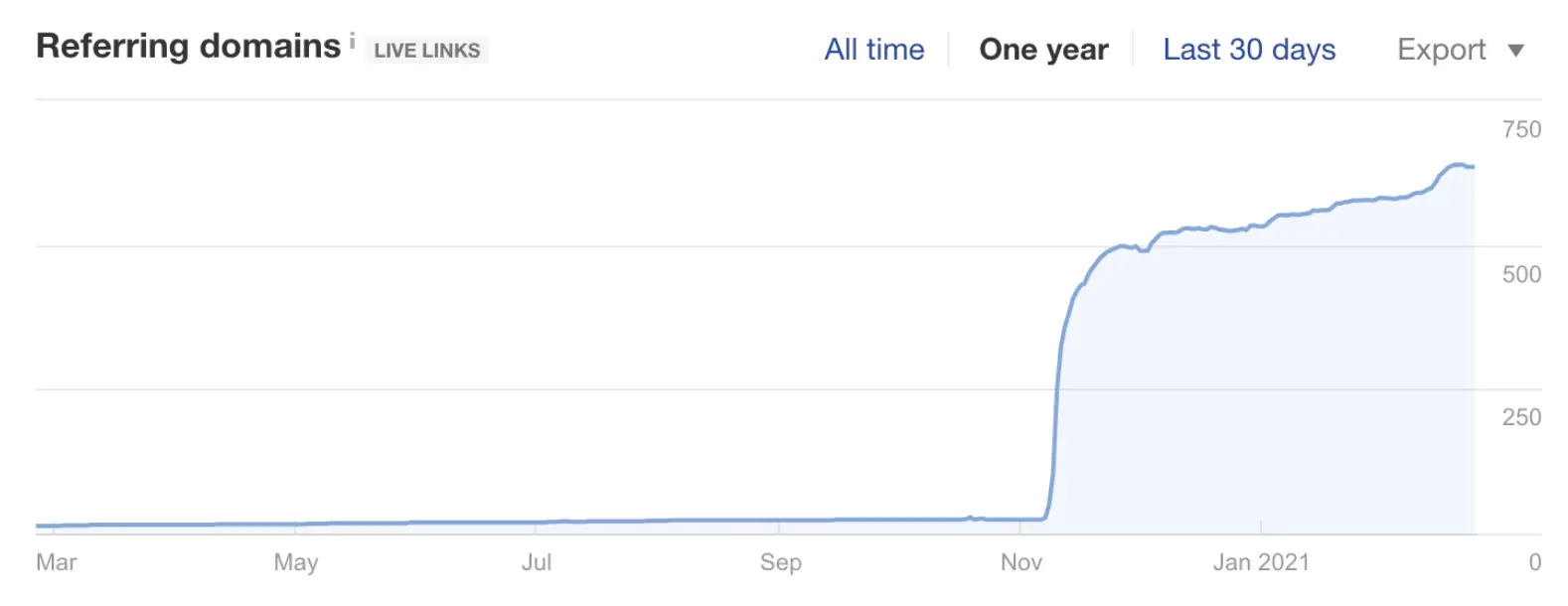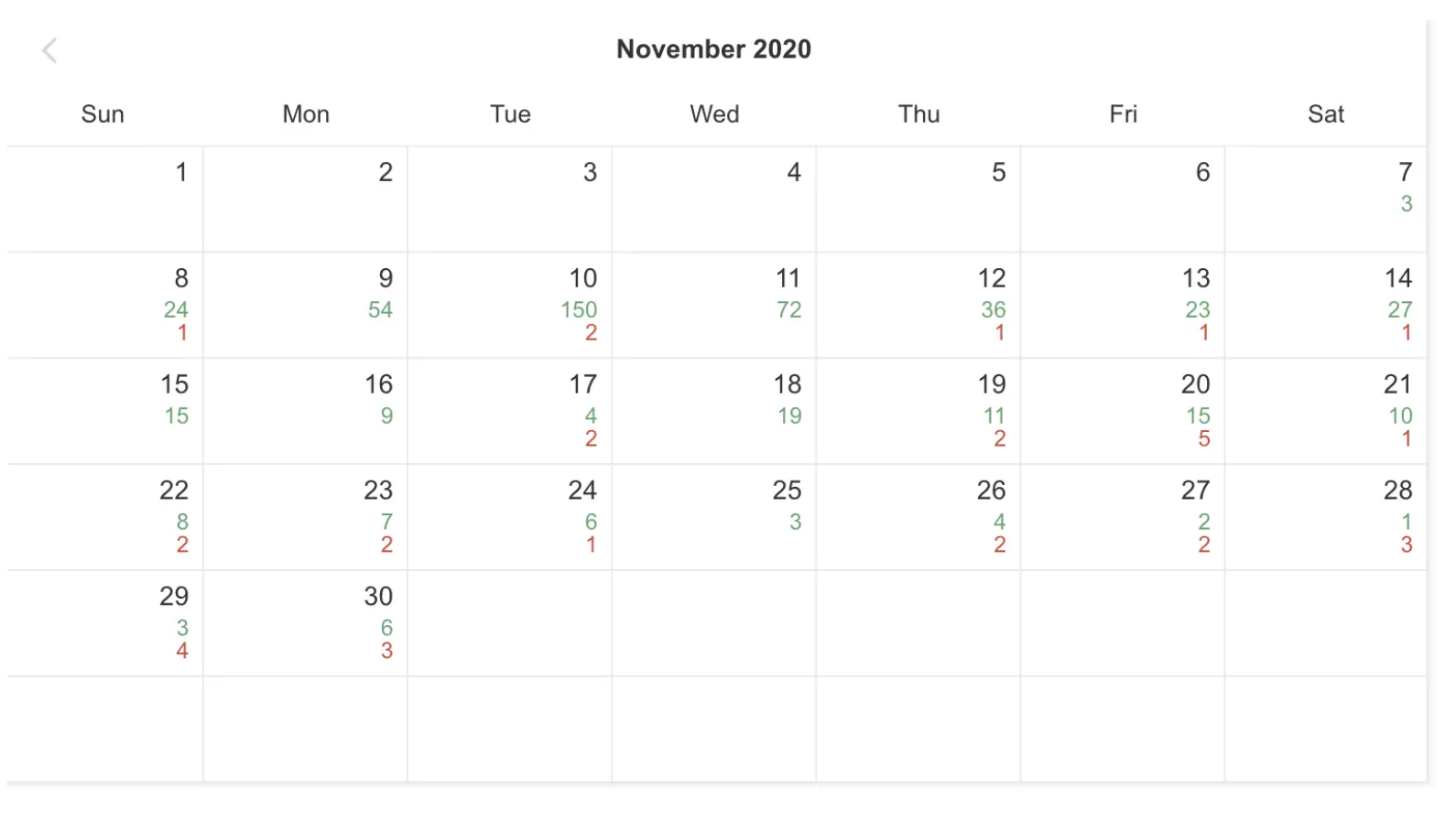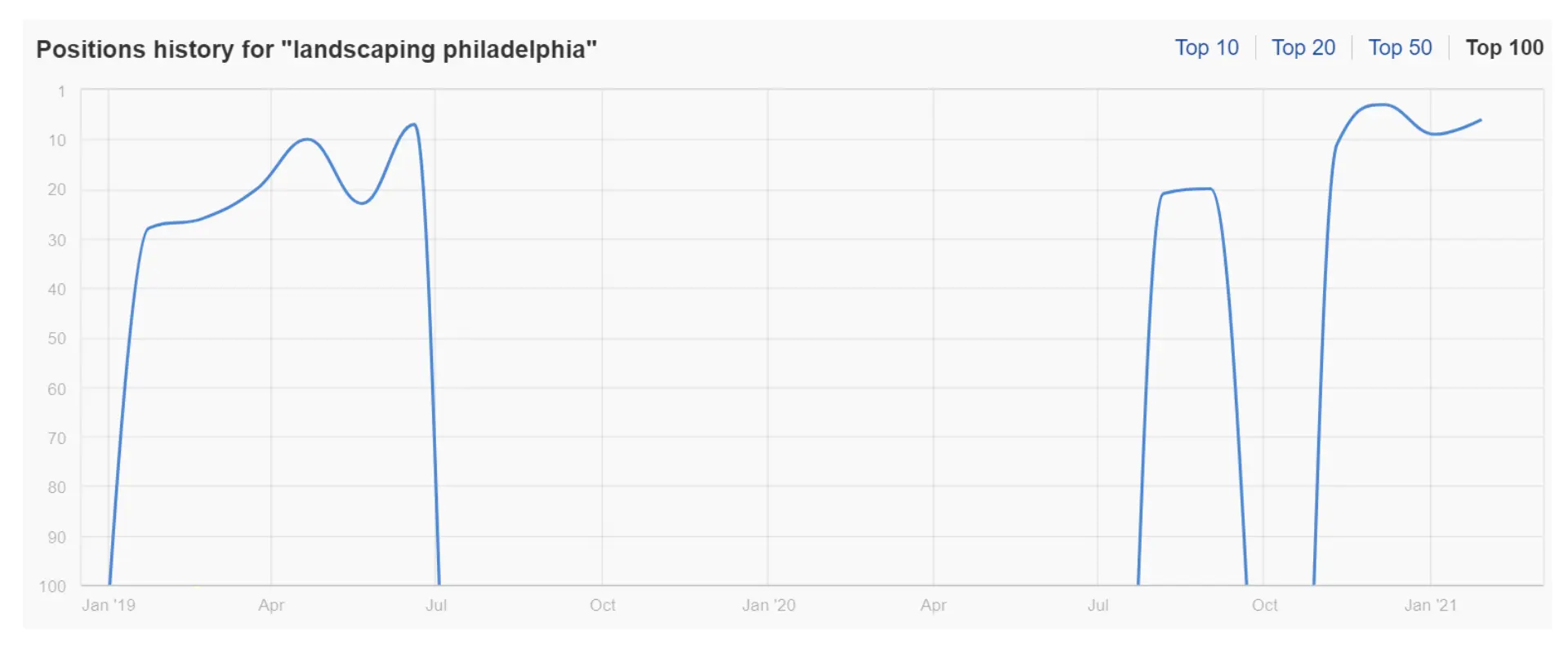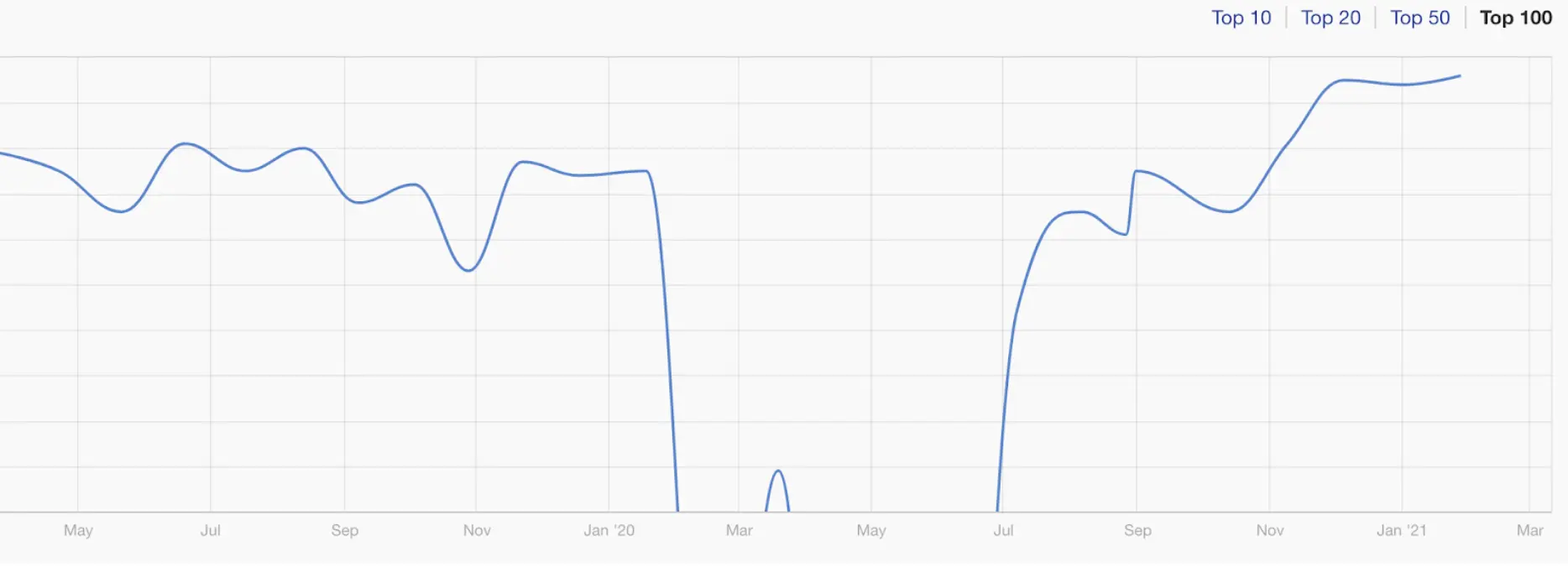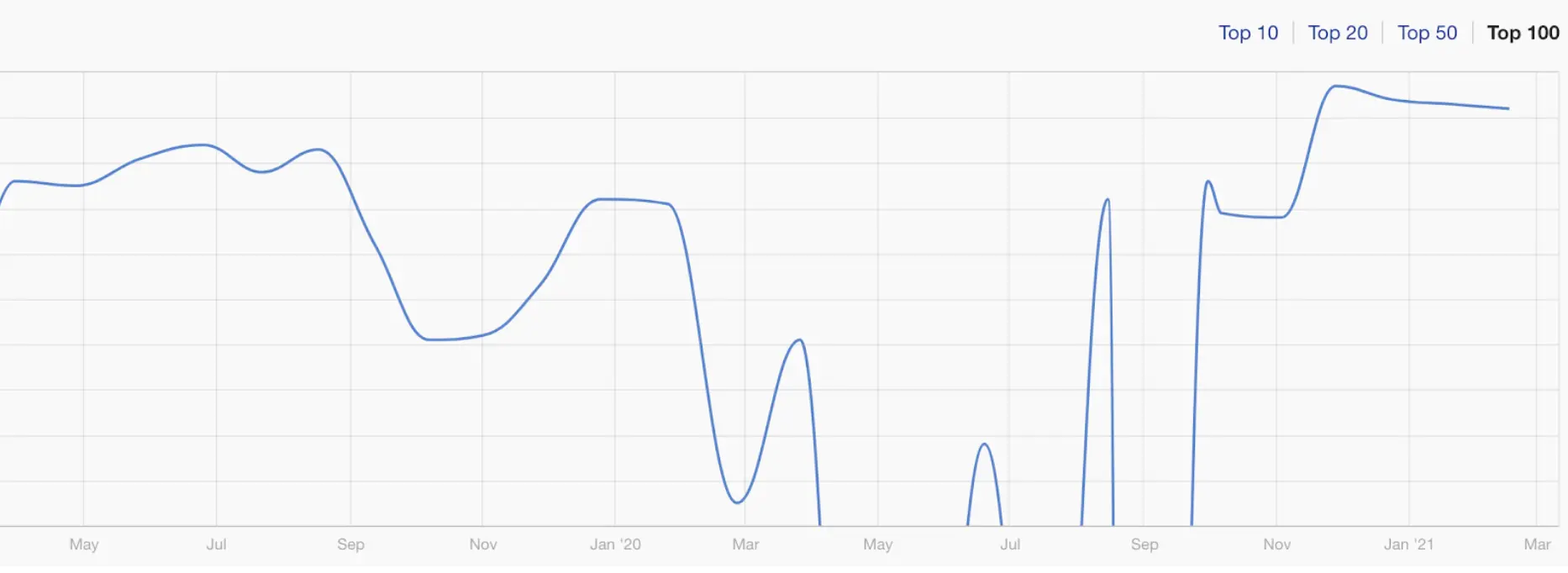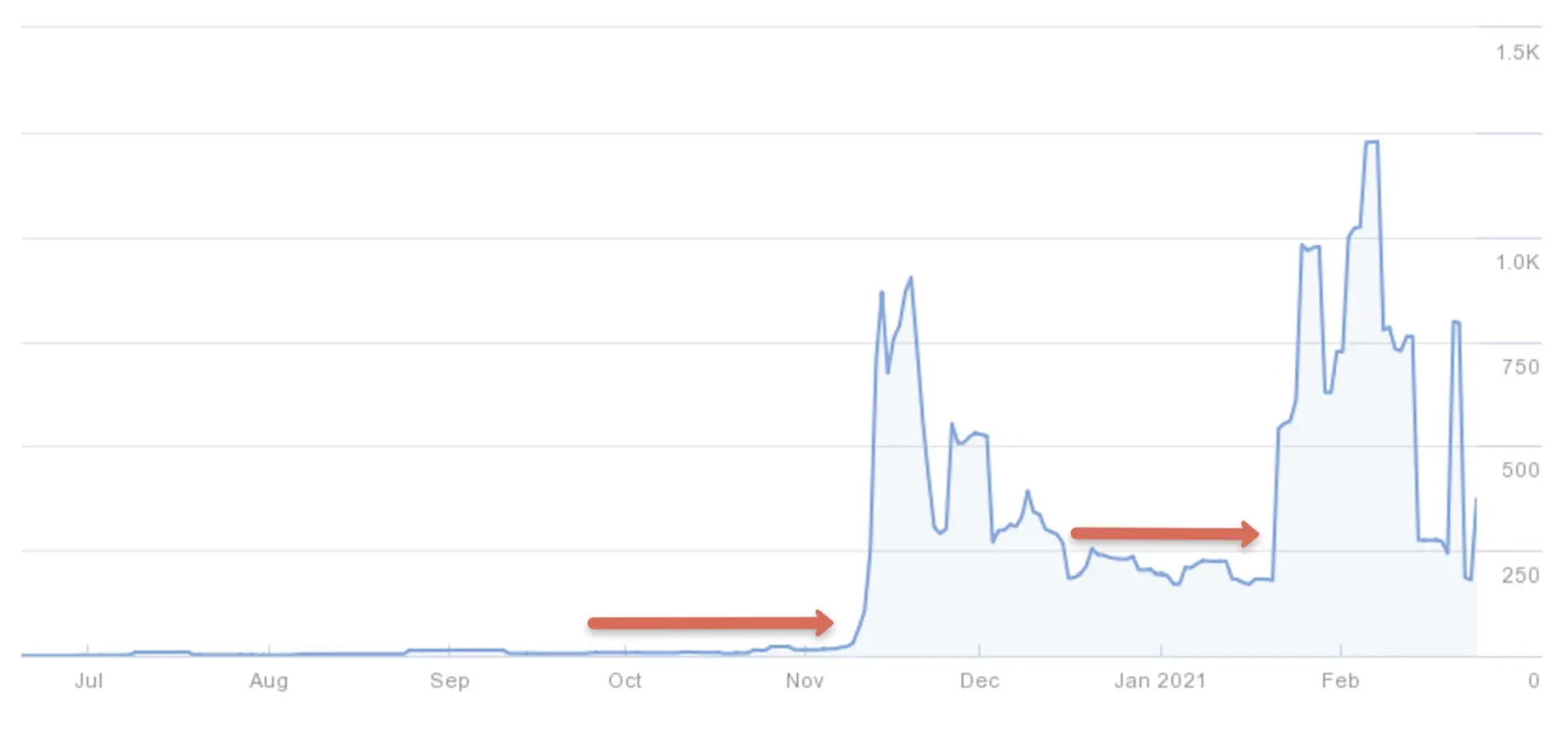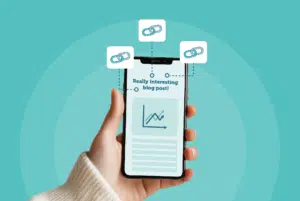How Four Seasons Total Landscaping Accidentally Went Viral (and What it Meant for their SEO)

In one of the most surreal moments ever, Rudy Guilliani accidentally delivered a speech from the parking lot of Four Seasons Total Landscaping in Philadelphia. The booking error led to a huge wave of news articles talking about Four Seasons Total Landscaping, including articles in The New York Times, The Guardian and USA Today.
Guess what.
Most of these websites linked to the Four Seasons Total Landscaping (FSTL from now on!) website too. I remember tweeting back and forth at the time with Patrick Stox and talking about how this may play out long-term for them in terms of organic search. Patrick updated the tweet thread until December at which point, things appeared to have settled.
I decided to have a look and see how they were doing now. Patrick also helped me with a review of this post prior to publishing - thank you!
Some context
There are a few things that make this an interesting case to take a look at from a link building perspective.
Firstly, we’ll see that FSTL received a large spike in links which quickly dropped off once things died down. A few links kept coming in over the course of a few weeks but the biggest spike happened within the first few days of the press conference. Conventional wisdom tells us that without sustaining links, any spike in organic traffic and rankings may only be temporary.
Secondly, we come back to the lovely topic of link relevancy which I happened to write about here last week. The links generated at this time were not from websites that relate to what FSTL actually does. If we use the Google Natural Language API to take a peek at what Google thinks their content is about, we get this:
Unsurprisingly, "landscaping business" is the topic that has the highest salience. The only one that sticks out is "press conference" which is mentioned once in the copy that I took from their homepage. It still has a pretty low salience though and I don’t think this is quite enough to make this a key topic for the page or domain as a whole.
The key point here is that most of the links generated to FSTL during this period are not from websites that focus on landscaping, grounds maintenance, lawns, or any of the topics above.
Does this mean that the links won’t have helped? We'll see.
The third reason that this is an interesting case to look at is that it’s akin to a brand going viral in both the speed of links that were acquired and the fact that links aren’t completely relevant. If it had been a deliberate act by FSTL, it would probably be described as a PR stunt. And a moment of genius.
Given that this is an approach used by many brands and agencies, it is worth looking into in order to understand the potential impact on their organic search traffic and rankings.
Right, so let’s see what happened.
When it all kicked off
The press conference took place on 7th November 2020 and we can see a clear spike in new referring domains in Ahrefs:
They went from around 24 referring domains on 6th November, to over 500 about a month later. Here is the day by day breakdown, remember that this is only when Ahrefs discovered the links, so there is likely to be a little bit of a lag here:
Taking a closer look at where these links came from, it reads like a link builder’s dream:
- The Guardian
- The New York Times
- Business Insider
- Buzzfeed
- Rolling Stone
- NME
- Wired
The list goes on.
In summary, FSTL gained a large number of new links and 20x the size of their link profile in the space of a month, but the vast majority of these new links were from high authority domains. Of course, there is some low-quality stuff in there too, but that always happens when you get links on large news websites because they get scraped all the time. I’ve rarely seen this hurt a brand and Google seems pretty good at detecting these types of links.
The drop off in links, but not really
As you can see above, referring domain numbers spike sharply and then drop off towards the end of November. However, they have continued to generate new links almost every day since the drop off and are now generating far more links than they ever have before.
Between January and October 2020, FSTL generated 21 new linking domains, losing 9 in the process, leaving us with a net increase of 12 linking domains in 2020, prior to Rudy’s visit.
Between November 2020 and mid-February 2021, they have generated 730 new referring domains, whilst losing 127; a net gain of 603 referring domains in the space of just over three months.
Yes, there was a huge spike in links which quickly dropped off, but their link velocity now is far, far higher than it’s ever been before. The links coming in now are along similar lines i.e. not particularly relevant to landscaping or gardening and mostly covering the fame that FSTL has achieved.
So, even if we put aside the viral aspect of the links that were generated, FSTL are still benefiting from this accidental 15 minutes of fame when it comes to link generation. They are also trying their best to ride the wave and take advantage of it which I’ll talk about shortly.
What happened to their traffic and rankings
Now, a couple of caveats (I’m an SEO, of course I have caveats).
- I’m using third-party data to try to assess the impact of these links on FSTL traffic and rankings. Ahrefs provided the largest dataset to work from, which is why I chose to use them.
- Selfishly, FSTL relaunched a newly designed website recently which, from what I can tell, is far better than their old one. It appears that this new website was launched just a few weeks ago in early February, so I’ve tried to limit my analysis and takeaways to before this point. This should help us isolate the impact of links a bit better.
So, what happened?
Well, broadly, this - which is the Ahrefs graph for their estimated organic traffic:

It’s then pretty up and down and drops off quite a bit at the end of December/start of January. We then see another spike around 21st/22nd January which is a bit higher than the original spike. There may be other reasons for this related to some technical changes they made to their shop, which we’ll look at shortly.
From this point onwards, things are up and down a fair amount and we know that they relaunched their website which will have also played a part in the spikes we see. So we can’t have too much confidence in isolating the impact of the links they gained during the period after the new website launched.
At first glance though, it would appear that they’ve benefitted a fair amount from the accidental 15 minutes of fame and the links they generated as a result.
We need to go a bit deeper though to try and see what really happened. We can do that by looking at the keywords that have caused these spikes and dips in organic traffic.
Keyword movements
The first thing to mention is that there appears to have been a small cost of fame. FSTL is a little all over the place when it comes to ranking for their own brand name. Taking [Four Seasons Landscaping] as an example, they are currently around the bottom of page 1 in the US results for this and appear to be bouncing around the whole of page 1. Their recent involvement in a Super Bowl advert also appears to have shaken things up more, with news stories ranking ahead of them.
Search volume for their brand has also increased hugely since the press conference, with Ahrefs now reporting 11,000 monthly searches for this one keyword. This means that movements up and down page 1 can affect how organic traffic is reported and often lead to the spikes that we see.
Putting branded keywords to one side, let’s take a look at a few non-branded keywords and see how they are doing.
You can see that I’ve filtered rankings to see how they were performing as of 31st October (prior to the press conference) and compared to 31st January which is before they redeveloped their website. I’ve also filtered to exclude branded keywords and variants.
You can see that FSTL is ranking much, much better than they were previously. Not all of the keywords are on page 1, but they’ve essentially gone from nowhere to being there or thereabouts.
Taking [landscaping philadelphia] as an example, we can see pretty clearly where the ranking movements happened. Note that ranking position reporting here isn’t at the local level, so the numbers we see don’t take into account someone being in Philadelphia.
And here is how [landscaper philadelphia pa] looks:
There is no telling what happened after January 2020 to see them drop out in this way, but we can certainly see that they reappeared prior to the influx of new links, then saw a nice little bump onto page 1 in early November.
And finally, this is how they’re doing for [philadelphia landscaping]:
Again, something clearly went wrong early in 2020 for them, before a return in October and a lovely little bump on to page one after the press conference.
Let’s bring it all together
The question - did the influx of links play a part in the increase in rankings that we’ve seen for non-branded keywords?
In my opinion, they almost certainly did and continue to play a part. Whilst the search volumes are somewhat modest and there is still lots of movement in rankings, I’d point to the specific keyword improvements above, along with this, which is Ahrefs estimate on their organic traffic, based on rankings and search volume:
This will include branded search, which we know has increased massively and will play a part. But I think there is enough movement on non-branded keywords to be reasonably confident that links have played a strong role here. I gave three examples above, but there are plenty more that follow a similar pattern.
It should also be noted that they appeared to move their shop offsite to another domain which has also played a part in the lifts and drops that we see here. In fact, they now appear to have the chance to reclaim 400+ linking root domains as a result of this which are 404ing. Link building sad face.
Could there be more at play?
Of course, it’s SEO. We will never, ever know the full picture even when the website belongs to us and we have access to all of the data. I mentioned earlier that FSTL is certainly riding the wave and from what I can see, doing a great job of it. Not only were they involved in a Super Bowl advert, but they are also not afraid to play on their 15 minutes of fame on their social media accounts. Not to mention that they also have an upcoming documentary and have launched a line of merchandise.
Is the increase something I’d expect given that their link profile has grown 20x in the last few months? Probably not to be honest, but this comes down to what they do and the size of the market they are pursuing. Despite worldwide fame, they are a local landscaping company and will only really be deserving of ranking for keywords related to this. These keywords naturally have volumes that are not massive, so they were only ever going to grow their search visibility and traffic by a certain amount.
We should also note that their search visibility and rankings previously weren’t exactly great, so there was arguably only one way to go. Although I would still point out that they were ranking ok for some relevant, non-branded keywords throughout September and October.
Another point here, raised by Patrick at Ahrefs, is that perhaps the sheer number of major news network links weren’t the big influencer here. FSTL also got a bunch of links from local networks, as well as a handful of niche-specific ones. After all, these stories will have quickly been buried under lots of other news items, whereas this isn’t as common with local and niche-specific links.
Lessons we can take from this
Well, pray that you’re the next company on the receiving end of a phone call from the lawyer of a US President who needs a press conference venue.
Aside from that golden nugget of advice, I think this all tells us a few things:
- Links matter.
- The relevancy of the links didn’t seem to mean that the links weren’t valuable or impactful, although this is obviously hard to isolate i.e. would they have done even better if the links were from garden and landscaping domains?
- The impact you see is likely to be proportional to where you are right now vs. the size of the opportunity in your market. 500 new links for one brand will mean something entirely different to another.
- Having campaigns that can lead to links similar to the ones FSTL generated is likely to add value to your brand, but isn’t likely to be the silver bullet that makes you rank for everything you want to. There is more to it than that and FSTL can still improve on where they have gotten to today.
- Links matter.
The strategic approach to link building
Looking at strategy for brands, I'd say that there are two core things to think about if you see link building as part of your growth strategy:
- You need to think about how to make your website deserving of links that you didn't ask for, therefore reducing your reliance on the next point. This is hard unless you're one of the top 100 brands in the world. Long-term, you don't win at link building by having the best campaign ideas or outreach. You win by getting links that you didn't ask for.
- This doesn't happen overnight. So in the meantime, you need to think about not just making your website link worthy, but having the creativity and relationships in place to generate links that you wouldn't otherwise get. Proactive content-led link building campaigns are one way to do this.
Not sure if you need to think about link building as part of your growth strategy? Drop me a message and I'll tell you honestly if it should be or not. Spoiler: it's not the best use of time and budget for everyone - not every agency will tell you that. We will.


